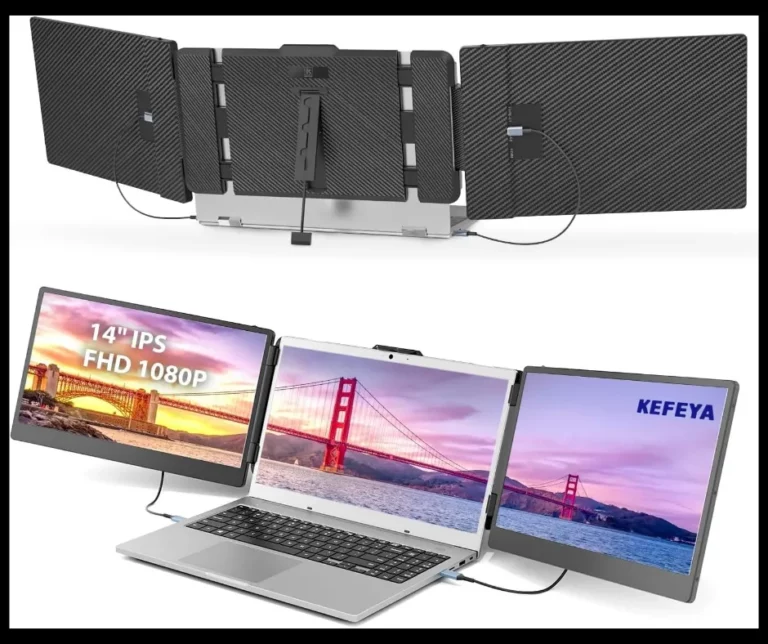Pros and Cons of Selling Gadgets Online
There are two main avenues to consider when selling gadgets online vs. brick-and-mortar stores.
With the rise of e-commerce, more and more businesses are choosing to sell their products online, while traditional brick-and-mortar stores have stood the test of time.
As a business owner or entrepreneur, you may find yourself weighing the pros and cons of each option.
Should you open a physical storefront or focus solely on online sales?
In this article, we will explore the advantages and disadvantages of selling gadgets through these two channels.
By examining the benefits and drawbacks of each approach, you can make an informed decision on which avenue best fits your business model and goals.
Whether you are just starting out or looking to expand your existing business, understanding the nuances of selling gadgets online vs.
brick-and-mortar is essential in today’s competitive market.
So let’s dive in and explore the pros and cons of each, so you can determine the best route for your gadget-selling success.
Table of Contents Pros and Cons of Selling Gadgets Online
You have more reach online
When it comes to selling gadgets, having a strong online presence provides a significant advantage.
With the widespread use of the internet and social media platforms, you have the opportunity to reach a much larger audience online compared to a brick-and-mortar store.
The digital landscape allows you to connect with potential customers not only locally, but also nationally and even internationally.
By leveraging various online marketing strategies such as search engine optimization, social media advertising, and email marketing, you can increase your visibility and attract customers from different regions.
This expanded reach online opens up a world of possibilities for growing your gadget business and increasing sales.
Physical stores offer personal interaction
In contrast to the digital realm, brick-and-mortar stores offer a unique advantage in terms of personal interaction.
When customers visit a physical store, they have the opportunity to engage with knowledgeable staff who can provide immediate assistance and guidance.
This personal touch can be invaluable in the gadget industry, where customers may have specific questions or require hands-on demonstrations.
In a physical store, you can create a welcoming and interactive environment that allows customers to touch, try, and experience gadgets firsthand.
This direct interaction not only builds trust but also enables you to address any concerns or provide personalized recommendations tailored to the customer’s needs.
Additionally, in-person interactions often foster a sense of connection and loyalty, leading to repeat business and positive word-of-mouth referrals.
While online platforms offer convenience and accessibility, physical stores excel in fostering personal relationships and delivering a tailored customer experience.
Online selling has lower overhead
When considering the pros and cons of selling gadgets online versus brick-and-mortar, it is important to acknowledge that online selling has lower overhead costs.
By operating an online store, you can avoid expenses such as rent for a physical space, utility bills, and maintenance costs associated with maintaining a storefront.
Additionally, online selling allows you to reach a global customer base without the need for multiple physical locations or extensive travel expenses.
This cost-effectiveness provides an opportunity to allocate more resources towards marketing strategies, inventory management, or enhancing the overall customer experience.
Moreover, the flexibility of online selling enables you to adapt quickly to market trends and adjust pricing or product offerings with ease, maximizing profitability.
Brick-and-mortar stores offer convenience
When considering the pros and cons of selling gadgets online versus brick-and-mortar, it’s important to recognize that brick-and-mortar stores offer convenience for both the seller and the customer.
As a seller, having a physical store allows you to establish a direct and personal connection with your customers.
They can come in, see, touch, and try out the gadgets before making a purchase, which can help build trust and enhance the overall shopping experience.
For customers, brick-and-mortar stores provide immediate access to the products, eliminating the wait time for shipping and allowing them to take the gadgets home immediately.
Additionally, in-store staff can provide expert guidance and answer any questions or concerns, ensuring that customers make informed decisions.
The convenience of brick-and-mortar stores can be particularly appealing for those who prefer the tactile experience of shopping or need the product urgently.
Online selling requires shipping logistics
When it comes to online selling, it’s important to consider the logistics of shipping.
As a seller, you must carefully plan and organize the shipping process to ensure timely delivery of gadgets to your customers.
This involves selecting reliable shipping partners, arranging for packaging materials, and accurately calculating shipping costs.
Additionally, you need to address any potential issues that may arise during transit, such as damage or delays.
While online selling offers the advantage of reaching a wider customer base and operating without the limitations of physical space, it does require diligent management of shipping logistics to ensure customer satisfaction.
By efficiently handling the shipping process, you can provide a seamless online shopping experience and build a reputation for reliable and prompt delivery of gadgets to your customers.
Physical stores allow in-person inspection
When considering the pros and cons of selling gadgets online versus brick-and-mortar stores, one advantage of physical stores is the ability to allow in-person inspection.
With a physical store, customers have the opportunity to personally examine and test the gadgets before making a purchase.
This hands-on experience gives them a sense of security and confidence in their buying decision.
They can inspect the quality, functionality, and physical condition of the gadgets, which may not be fully conveyed through online product descriptions and images.
This in-person inspection also provides an opportunity for customers to seek assistance from knowledgeable staff who can provide expert advice and guidance.
Furthermore, the ability to physically interact with the gadgets can help customers make more informed choices, resulting in higher customer satisfaction and potentially reducing the likelihood of returns or exchanges.
Online selling can reach global buyers
Selling gadgets online offers the distinct advantage of being able to reach global buyers.
With an online store, you have the potential to expand your customer base beyond the limitations of a physical location.
By leveraging the power of the internet, you can market and sell your gadgets to customers all around the world.
This opens up opportunities to tap into new markets and reach customers who may not have access to brick-and-mortar stores in their vicinity.
The ability to reach global buyers not only increases your potential sales volume but also allows you to diversify your customer base and reduce dependence on local market conditions.
Additionally, selling online eliminates the need for expensive international shipping infrastructure, as you can rely on established logistics networks to efficiently deliver your products to customers worldwide.
Overall, online selling offers immense potential for expanding your reach and tapping into a global customer base in the ever-evolving landscape of gadget sales.
Brick-and-mortar stores have higher security
When it comes to security, brick-and-mortar stores have a clear advantage over their online counterparts.
With physical stores, you have the ability to implement robust security measures to protect your inventory and premises.
This includes the use of surveillance cameras, alarm systems, and trained security personnel.
These measures act as a deterrent to potential thieves and provide a sense of security for both customers and employees.
Additionally, in a brick-and-mortar setting, you have more control over preventing shoplifting and fraudulent activities, as you can physically monitor and interact with customers.
This higher level of security can help minimize losses from theft and provide peace of mind for both business owners and customers.
In conclusion, when deciding between selling gadgets online or in a brick-and-mortar store, it’s important to consider the pros and cons of each option.
While online sales offer convenience and a wider reach, brick-and-mortar stores allow for a more personal customer experience and the ability to physically see and test products.
Ultimately, the best choice will depend on your specific business goals and target audience.
Consider all factors carefully before making a decision to ensure the success of your gadget selling venture.
FAQ
What are the advantages of selling gadgets online compared to brick-and-mortar stores?
When you sell gadgets online, you benefit from a wider customer reach and the potential for higher sales volumes.
By leveraging online platforms, you can showcase your products to a global audience 24/7.
Additionally, the overhead costs of operating an online store are typically lower compared to brick-and-mortar stores, allowing for increased profit margins.
Online selling also offers the advantage of convenient and streamlined transactions, with customers being able to easily browse and purchase products from the comfort of their own homes.
Lastly, online platforms provide the opportunity for personalized marketing strategies and customer data analysis to enhance sales and customer satisfaction.
What are the disadvantages of selling gadgets online compared to brick-and-mortar stores?
When selling gadgets online, you may encounter a few disadvantages compared to brick-and-mortar stores.
Firstly, you might face challenges in building trust with customers who cannot physically see or touch the products.
Additionally, online sales require reliable shipping methods, which could lead to complications like delays or damage during transit.
Furthermore, online platforms often have high competition, making it harder to stand out.
Lastly, customer service can be more challenging as you have to rely on digital communication rather than face-to-face interactions.
Despite these disadvantages, online selling offers the advantages of a wider reach and lower overhead costs.
How does selling gadgets online affect customer trust and satisfaction compared to brick-and-mortar stores?
When you sell gadgets online, you have the advantage of reaching a wider customer base and offering convenience.
Customers can browse and purchase products from the comfort of their own homes.
However, this also means they cannot physically see or touch the gadgets before buying, which may affect their trust and satisfaction.
In brick-and-mortar stores, customers have the opportunity to interact with the gadgets, ask questions, and receive immediate assistance.
This face-to-face interaction builds trust and enhances customer satisfaction.
Ultimately, the impact of selling gadgets online on customer trust and satisfaction depends on the customer’s preference for convenience or the desire for a tactile shopping experience.
What are the potential cost savings or financial benefits of selling gadgets online versus brick-and-mortar stores?
When you sell gadgets online instead of in brick-and-mortar stores, you can enjoy potential cost savings and financial benefits.
With an online platform, you eliminate the need for a physical storefront, reducing overhead costs such as rent and utilities.
Additionally, online selling allows you to reach a wider audience, increasing your chances of making more sales and generating higher profits.
You can also save on expenses related to staffing because online selling requires less manpower.
Furthermore, online platforms offer various marketing tools and analytics that can help you optimize your sales strategy and maximize your financial gains.
How does the competition differ between selling gadgets online and brick-and-mortar stores?
When it comes to selling gadgets, the competition varies between online platforms and brick-and-mortar stores.
In the online realm, you face a vast number of sellers from all around the world.
Your success hinges on factors like website design, search engine optimization, and marketing strategies.
On the other hand, in brick-and-mortar stores, the competition is more localized.
You need to focus on factors like store location, product placement, and customer service to stand out.
Additionally, in physical stores, customers can physically interact with the products, which can influence their purchasing decisions.
Overall, the competition differs in terms of reach, strategies, and customer experience.







